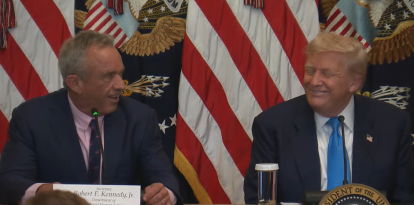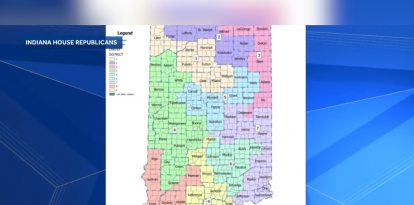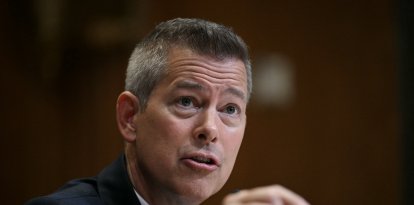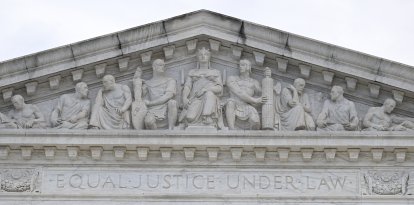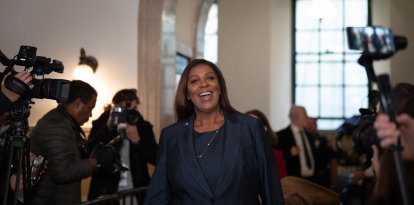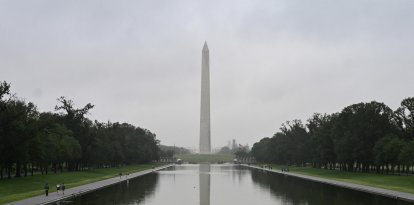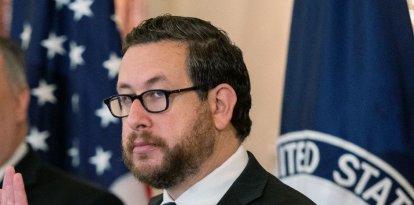ANALYSIS
What is filibustering and why Cory Booker's record speech doesn't qualify?
The longest speech in Senate history cannot be viewed as part of the tactic of legislative gridlock, a strategy with roots dating back to the very foundations of the upper chamber and the right to unlimited debate.

Senator Cooper attends to the press after more than 25 hours of speeches.
The 25 hours and five minutes that Democratic Congressman Cory Booker spent delivering the longest speech in Senate history to delay votes and protest against Trump's agenda has once again brought filibustering into the spotlight. However, paradoxically, his intervention cannot be classified under this legislative tactic.
Filibustering can be summarized as "discussing a bill to its death." However, it was the fact that Booker did not seek to block the passage of a specific rule that excluded his intervention from being considered part of this legislative tactic.
Filibustering: A way to protect the minority or a tool of partisan obstruction?
A movement that, as the Senate notes on its website, was born alongside the Upper House and is deeply rooted in its founding principles. The right to unlimited debate in this institution has been used from the very beginning "as a protector of political minorities against the tyranny of the majority," according to its defenders, or "as a tool of partisan obstruction," according to its critics.
"The tactic of using long speeches to delay legislative action appeared in the first session of the Senate. On Sept. 22, 1789, Pennsylvania Senator William Maclay wrote in his diary that the 'purpose of the Virginians . . was to talk all the time so that we could not pass the bill.'"
The term filibuster became popular from 1850 onward
The practice, although not widespread before 1830, became "common enough by mid-century to earn a colorful label: the filibuster." As recorded by the Senate, the term "derived from the Dutch word 'freebooter' and the Spanish 'filibusteros'—the pirates who raided the Caribbean islands—and began to appear in American legislative debates in the 1850s."
The first official references to the term in this context date back to 1853, when Albert Brown and George Badger used it. On January 3, 1853, Albert Brown of Mississippi remarked, "'I saw my filibustering friend across the House.' A month later, North Carolina Senator George Badger referred to 'filibuster speeches,' and the term became a permanent part of our political lexicon."
Intense debates over limiting or ending filibustering
The practice quickly sparked heated debates, with supporters defending it as a crucial tool for "the right to unlimited debate, a key tradition of the Senate, vital for tempering the power of political majorities," while others questioned its validity.
The debate intensified in the late 19th and early 20th centuries. "At that time, the Senate was larger and busier, and the sheer amount of work to be done each session meant that a filibustering senator could disrupt the body's progress and extract concessions from senators who wanted their bills passed."
Robert La Follette, the genius of the filibuster
In fact, one of the greatest masters of filibustering played a key role in getting the "cloture" rule passed, which set a minimum number of votes required to move to a vote on an initiative by limiting debate. In 1906, newly elected Senator Robert La Follette broke the unwritten rule of silence traditionally observed in respect for senior members and delivered his first speech just three months after his investiture. His speech left a lasting impression, as he spoke for eight hours on three consecutive days, single-handedly filling 148 pages of the congressional record.
Two years later, La Follette set an absolute filibuster record by speaking for 18 hours and 23 minutes to block the approval of a report. He was forced to quit after drinking tainted eggnog. To this day, there is speculation about whether it was simply spoiled liquor due to the heat of that day (May 29, when all senators were eager to return to their home states) or an attempt to poison him and silence his speech. Regardless, his record stood for half a century as the longest speech in the history of the Upper House.
Woodrow Wilson had "enough" of the misuse in 1917
Situations like this led President Woodrow Wilson to declare, "The Senate of the United States is the only legislative body in the world that cannot act when its majority is willing to do so. A small group of willful men, who represent no opinion but their own, have left the great government of the United States helpless and contemptible."
He therefore called for the Upper House to adopt a cloture rule. The Senate website recalls, "On March 8, 1917, at a specially called session of the 65th Congress, the Senate agreed to a rule that basically preserved its tradition of unlimited debate. The rule requireda two-thirds majority to end debateand allowed each member to speak for an additional hour before voting final approval. Over the ensuing 46 years, the Senate only managed to invoke gridlock on five occasions."
Today, 60 votes allow the filibuster to be circumvented
As a result, several frustrated senators pushed to reduce the number of votes required to trigger cloture. "In 1975, the Senate reduced the number of votes needed for cloture from two-thirds of voting senatorsto three-fifths of all duly elected and sworn senators, i.e., 60 of the current 100 senators.
Today, filibusters remain a part of Senate practice, though only in legislative matters. In the 2010s, the Senate established new precedents allowing a simple majority to end debate on nominations.
Longest filibusters in history
Before him, "Wayne Morse took to the Senate floor on April 24, 1953. Described as 'a thin, sharp man with a trim mustache, sharp nose, and bushy black eyebrows,' he launched an obstructionist campaign against the Tidelands Oil legislation. When he finally concluded, after 22 hours and 26 minutes, he had surpassed the 18-hour record set in 1908 by his mentor, Robert La Follette."













